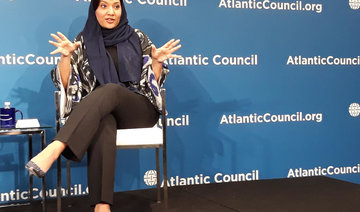LONDON: Prince Mohammed bin Salman and the Archbishop of Canterbury viewed fragments of a Qur’an manuscript found in a Birmingham University library in 2015 on Thursday, the second full day of his landmark visit to the UK.
The Qur’an manuscript, thought to be among the world’s oldest, dates back to the seventh century.
Consisting of two parchment leaves, the Qur’an manuscript is part of the University’s Mingana Collection of Middle Eastern manuscripts which is held in the Cadbury Research Library, University of Birmingham.
Funded by Quaker philanthropist Edward Cadbury, the collection was acquired to raise the status of Birmingham as an intellectual centre for religious studies and attract prominent theological scholars.
The manuscript contains parts of chapters 18 to 20 of the Qur’an known as Surah Al-Kahf, Surah Maryam and Surah Taha, written with ink in Hijazi, an early form of Arabic script.
The manuscript was found by an academic and had been misbound with leaves of a more recent Qur’an manuscript. It remained undiscovered in the library for almost a century.
According to BBC News, radiocarbon dating found the manuscript to be at least 1,370 years old, making it among the earliest in existence.
The tests, carried out by the Oxford University Radiocarbon Accelerator Unit, showed that the fragments, written on sheep or goat skin, were among the very oldest surviving texts of the Quran.
According to Muslim tradition, the Prophet Muhammad received the revelations that form the Qur’an between the years 610 and 632, the year of his death. At the time, the divine message was not compiled into the book form in which it appears today. Instead, early Muslims memorized the revelations and parts of it had also been written down on parchment, stone, palm leaves and animal bones.
The final written form of the Qur’an was completed and fixed under the direction of the third Caliph Uthman, in about 650.
Professor David Thomas, Professor of Christianity and Islam and Nadir Dinshaw, Professor of Interreligious Relations at the University of Birmingham, said: “The tests carried out on the parchment of the Birmingham folios yield the strong probability that the animal from which it was taken was alive during the lifetime of the Prophet Muhammad or shortly afterwards. This means that the parts of the Qur’an that are written on this parchment can, with a degree of confidence, be dated to less than two decades after Muhammad’s death”.





























